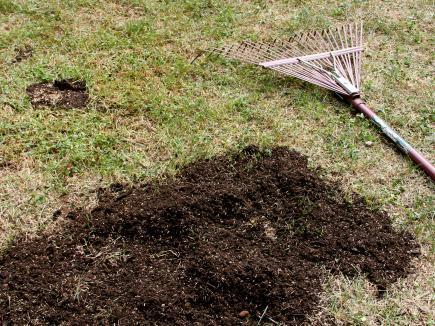November 25, 2014
Get Your Lawn Ready for Spring
Tips and pointers for lush, green grass around your home
 Despite the reluctance of winter to release its grasp on the weather, there are warmer days ahead when Canadians will be heading outside to bring new life to their yards.
Despite the reluctance of winter to release its grasp on the weather, there are warmer days ahead when Canadians will be heading outside to bring new life to their yards.
But there is more to lawn care than simply pulling out the mower and giving it a cut. Ontario residents can no longer rely on herbicides as part of their lawn care regimen, but with the proper lawn care techniques you can cultivate a thick, healthy lawn that is resilient against pests and will readily out-compete weeds.
“A lush, green lawn around your home does so much more than simply add aesthetic value to your property,” says Denis Flanagan from Landscape Ontario. “It provides fresh air and retains storm water, while helping cool the temperatures during the heat waves of summer.”
Here are Denis’s seven ways to best manage weeds and ensure a healthy lawn that not only looks good, but also provides environmental benefits:
Tips and pointers for lush, green grass around your home

Spring is the ideal time to overseed your lawn.
But there is more to lawn care than simply pulling out the mower and giving it a cut. Ontario residents can no longer rely on herbicides as part of their lawn care regimen, but with the proper lawn care techniques you can cultivate a thick, healthy lawn that is resilient against pests and will readily out-compete weeds.
“A lush, green lawn around your home does so much more than simply add aesthetic value to your property,” says Denis Flanagan from Landscape Ontario. “It provides fresh air and retains storm water, while helping cool the temperatures during the heat waves of summer.”
Here are Denis’s seven ways to best manage weeds and ensure a healthy lawn that not only looks good, but also provides environmental benefits:
- Aerate and thatch control. Aerating your lawn in the spring breaks up thatch — a layer of dead grass and organic matter that accumulates just above the soil — and loosens compact soil that allows water, air and nutrients to penetrate deeper, producing stronger roots. Break up thatch so there is no more than a 1 cm layer. Anything more than that will harbour insects and diseases, while preventing water from getting to the grass’s root system.
- Improve soil quality. The ideal soil for grass is moist, but not waterlogged. Soil can be sent for analysis to ensure it has the right levels of phosphorous, potassium, pH and lime. Top dress your lawn with less than 1 cm of top soil or compost, and then …
- Overseed. Spring is an ideal opportunity to introduce drought-resistant grass mixes, like perennial rye and red fescue that are durable and will help prevent insects and disease.
- Proper mowing technique. You don’t want to cut your lawn shorter than 6-8 cm (three inches), and ensure your mower blade is sharp to prevent tearing of the grass plants. It recommended that you cut your lawn regularly so you don’t remove more than a third of the grass blade at one time. It is also recommended that you leave the clippings on the lawn to provide a natural source of nitrogen.
- Fertilize. A slow-release fertilizer is vital to grass health. The nutrients provided will help you grow a thick lawn that is better able to choke out weeds. Use a spreader for even application of a good quality fertilizer. An established lawn with a good root system can seek out phosphorous already in the soil. The Lawn Care Sector Group of Landscape Ontario recommends its members use a phosphorus-free fertilizer on established turf.
- Spot check for weeds and insects. Through the season, pull broadleaf weeds by hand to prevent flowering and seeding. Nematodes can be applied to your lawn to help control grubs and overseeding with perennial rye grass will minimize chinch bugs, bluegrass billbugs and sod webworms.
- Proper watering. A healthy lawn does not need frequent watering -- less than once a week. But ensure it is watered deeply and early in the morning to prevent evaporation. Don’t fret during drought periods. Your lawn will be able to survive four-to-six-weeks without adequate water; obey local watering restrictions, check your lawn regularly for pests, keep traffic off it, stop mowing and don’t fertilize.